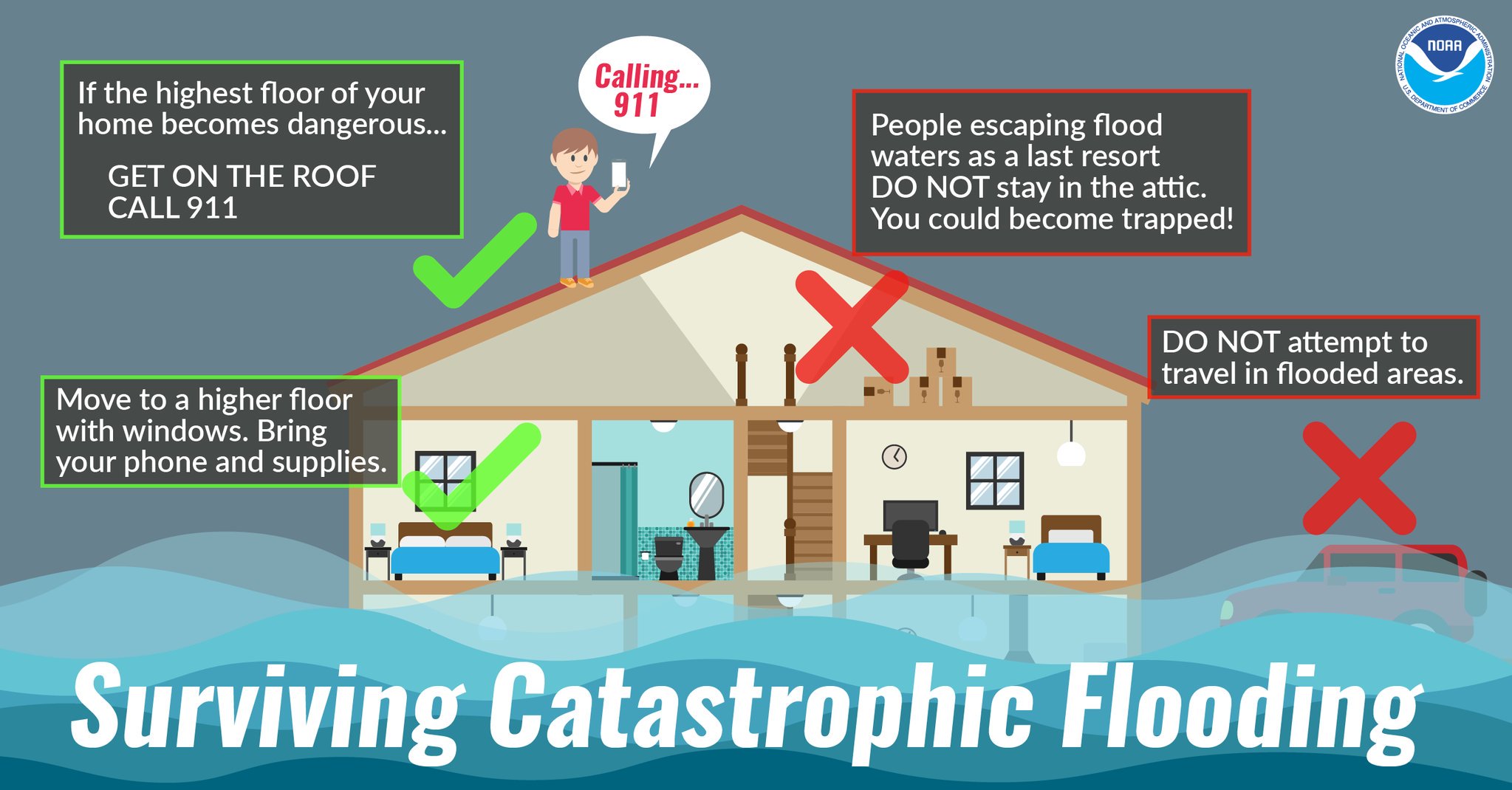Flash Flood Safety: What To Know About Flood Warnings And Potential Alerts

Table of Contents
Understanding Flash Flood Warnings and Alerts
Knowing the difference between various alerts is vital for effective flash flood safety. Meteorological agencies use specific terminology to communicate the level of threat.
Different Types of Alerts
Understanding the language used in weather alerts is paramount for your safety. Here's a breakdown:
-
Flash Flood Watch: Conditions are favorable for flash flooding to develop. Stay informed and be prepared to act quickly if conditions worsen. Example language: "Flash Flood Watch in effect for [County Name] until [Time]. Heavy rainfall is expected."
-
Flash Flood Warning: Flash flooding is occurring or is imminent. Take immediate action to protect yourself and your property. Example language: "Flash Flood Warning issued for [County Name]. Rapidly rising water is reported near [Location]. Evacuate immediately."
-
Flash Flood Advisory: Flash flooding is possible. Be aware of the conditions and take precautions. Example language: "Flash Flood Advisory for [County Name]. Several inches of rain have fallen, leading to potential flooding in low-lying areas."
You can receive these alerts through various channels, including:
- Weather Apps: Download reputable weather apps on your smartphone for real-time alerts and forecasts.
- NOAA Weather Radio: A NOAA Weather Radio provides continuous weather information and alerts.
- Local News: Stay tuned to local news broadcasts and websites for updates.
Recognizing Flash Flood Indicators
Besides official alerts, you can identify potential flash floods by observing these signs:
- Rapidly rising water levels: Noticeably increased water levels in streams, rivers, or normally dry areas.
- Overflowing streams and rivers: Rivers and streams exceeding their banks are a clear indication of imminent danger.
- Unusual water sounds: The roar of rushing water, even from a distance, is a significant warning sign.
- Heavy rainfall in short periods: Intense rainfall over a short period significantly increases the risk of flash flooding.
- Changes in weather patterns: Sudden and dramatic changes, like intense cloud buildup or a rapid drop in temperature, can signal an approaching storm capable of causing flash floods.
Driving through floodwaters is extremely dangerous. Remember the "Turn Around, Don't Drown" campaign – never attempt to drive through flooded areas, even if they appear shallow. The force of the water can easily sweep away your vehicle.
Creating a Flash Flood Safety Plan
Proactive planning is critical for effective flash flood safety. A well-defined plan can significantly improve your chances of survival and minimize property damage.
Developing a Family Emergency Plan
Your family's safety is paramount. Create a comprehensive plan that includes:
- Pre-determined evacuation routes: Plan multiple routes to higher ground, considering potential road closures.
- Designated safe locations: Identify several safe locations, such as a friend's house on higher ground or a designated shelter.
- Emergency contact information: Keep a list of emergency contacts readily available.
- Emergency kit: Prepare a kit with essential supplies including water, non-perishable food, first-aid supplies, medications, flashlights, and a battery-powered radio.
Protecting Your Property
Minimizing property damage is a crucial aspect of flash flood safety. You can take steps to protect your home and belongings:
- Move valuables to higher ground: Relocate important documents, electronics, and other valuable items to upper floors or a safe, elevated location.
- Clear gutters and drains: Ensure that gutters and drains are clear to allow for efficient water flow.
- Reinforce structures: Strengthen structures vulnerable to flood damage, such as basement walls or foundations.
- Install flood barriers: Sandbags can be effective temporary barriers to prevent water from entering your home.
- Flood insurance: Consider purchasing flood insurance, as it offers financial protection against flood-related losses.
Actions to Take During a Flash Flood
When a flash flood warning is issued, immediate action is crucial.
Evacuation Procedures
If a flash flood warning is issued, evacuate immediately:
- Listen to official instructions: Follow instructions from local authorities and emergency personnel.
- Move quickly to higher ground: Evacuate to a designated shelter or higher elevation.
- Never drive through flood waters: This is extremely dangerous and can be fatal.
- Assist elderly neighbors (if safe): If it's safe to do so, offer assistance to elderly or disabled neighbors.
Staying Safe Indoors During a Flash Flood
If evacuation isn't possible:
- Move to the highest level of the home: Go to the upper floors of your home.
- Turn off utilities: Shut off electricity and gas to prevent hazards.
- Monitor the flood situation: Stay informed through official channels.
- Stay informed: Continue monitoring weather reports and official updates.
Conclusion
Flash flood safety requires preparedness and swift action. Understanding the different types of alerts, creating a comprehensive safety plan, and taking appropriate steps during a flash flood can significantly reduce risks. Being proactive and informed is key to ensuring the safety of yourself and your loved ones. Don't be caught unprepared. Learn more about flash flood safety and develop your family's emergency plan today. Stay informed about weather alerts in your area and prioritize your safety during a flash flood. Remember, your safety is paramount during a flash flood.

Featured Posts
-
 Queen Wen Returns To Paris A Look At The Court
May 26, 2025
Queen Wen Returns To Paris A Look At The Court
May 26, 2025 -
 Thames Water Executive Bonus Scandal Public Outcry And Financial Implications
May 26, 2025
Thames Water Executive Bonus Scandal Public Outcry And Financial Implications
May 26, 2025 -
 54xroni Naomi Kampel Apokalyptikes Fotografies Apo Tis Eksotikes Tis Diakopes
May 26, 2025
54xroni Naomi Kampel Apokalyptikes Fotografies Apo Tis Eksotikes Tis Diakopes
May 26, 2025 -
 Jadwal Moto Gp Inggris 2024 Silverstone Klasemen Terbaru And Marquez
May 26, 2025
Jadwal Moto Gp Inggris 2024 Silverstone Klasemen Terbaru And Marquez
May 26, 2025 -
 Bueyuek Kuluepte Sorusturma Doert Oenemli Oyuncu Goezaltinda Mi
May 26, 2025
Bueyuek Kuluepte Sorusturma Doert Oenemli Oyuncu Goezaltinda Mi
May 26, 2025
